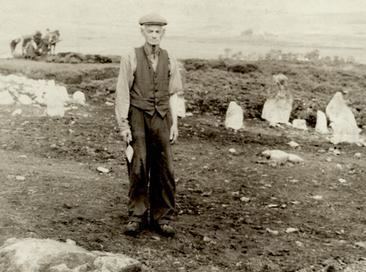Nationality Irish Died 1965 Role Poet | Name George Barnett Other names Geordie | |
 | ||
Born 11 February 1876 Owenreagh, Sixtowns, Draperstown, N. Ireland Occupation Local historian, archaeologist, botanist, geologist, folklorist and poet Books Geordie Barnett's Sixtowns, Geordie's jaunts Resting place Draperstown, Northern Ireland | ||
George Barnett (11 February 1876 – 10 April 1965) was an Irish historian, archaeologist, botanist, geologist, folklorist and poet. Self taught, he acquired a vast knowledge of the Sperrin Mountains through experience, experimentation, observation, and traditional lore. He discovered many prehistoric sites, although he is best known for his discovery of the Beaghmore stone circles, and developed the theory that they were an ancient lunar observatory. This theory was expressed in his poem, The Beaghmore Stone Circles.
Contents
Field work
Well-known to academics for his extensive local knowledge and experience of the Sperrins, he assisted many field expeditions, and is recognised in the published findings. Upon his death, Professor E.E. Evans, Ireland's first professor of Geography, wrote:
"George Barnett, who died on 10th April 1965, in his ninetieth year, was a man of rare quality who, with little formal education, won more than local fame for his knowledge of field archaeology, botany, and geology."
Pen name
In the 1920s, he used the pen name G.B. M'Keown (M'Keown being his mother's maiden name), when writing notes for the weekly column 'Nature and Antiquarian Notes' in the Northern Whig Newspaper. On 19 November 1927 his real identity was revealed to the public.
